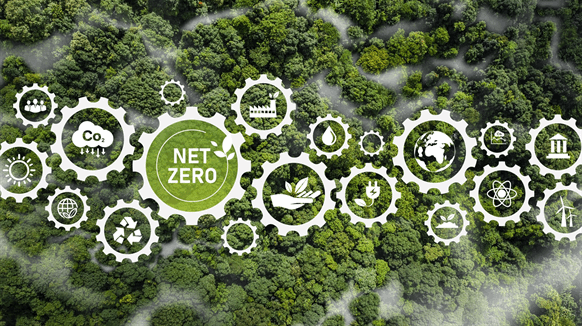Wood Mackenzie has analyzed 19 major countries and regions and key end-use sectors to assess what is needed to meet net zero commitments.
In the run-up to the COP27 climate conference in Egypt, more than 80 countries announced their pledge to reach net zero emissions by mid-century. Most countries in the Organization for Economic Co-operation and Development (OECD) aim to reach zero by 2050, while developing countries plan to reach it a decade or two later. China and India aim to reach net zero by 2060 and 2070, respectively.
Energy-related emissions in our pledge case decline by 8% from 2019 levels by 2030 and by 80% by 2050. Global net zero is reached around 2060, bringing cumulative emissions to about 750 billion tons of CO2. This means the world is on track to reach 1.7 degrees Celsius warming with a 33% probability and 2 degrees Celsius warming with a 67% probability.
However, the world is a long way from the most ambitious goals of the Paris Agreement in our pledge case. The remaining carbon budget for a 1.5°C pathway is about 400 Bt CO2 and is likely to be exceeded in the early 2030s.
Under Woodmac’s more ambitious Accelerated Energy Transition (AET-1.5) scenario, a path to 1.5 degrees Celsius is still plausible and achievable with rapid adoption of hydrogen and CCUS technologies and gains efficiency, especially in China and India.
Energy generation
Compared to the Woodmac base case, energy demand expands by around 40% under the pledge scenario, with green hydrogen as the sole source of incremental growth by 2050. Around 90% of incremental capacity comes from wind, solar and energy storage. Wind and solar generation are double our base case under our pledge scenario.
Dispatchable generation with low carbon emissions becomes critical due to increased penetration of wind and solar. Markets are shifting from uninterruptible gas and coal to investing in ammonia co-firing, hydrogen combustion and CCS to provide flexible generation.
Merchandise
Oil demand declines to 49 million barrels per day (mbpd) under the pledge scenario. Electrification and the deployment of emerging technologies are driving replacement in all sectors, especially in OECD countries.
Bioenergy is expanding rapidly so that the maritime sector can achieve its decarbonisation goals. While oil still accounts for the highest proportion of supply under the pledge scenario, bioenergy reaches a 30% share by 2050. OECD gas demand peaks around 2025, almost a decade earlier than our base case, while non-OECD gas demand remains resilient.
Under the pledge scenario, overall coal demand is 30% lower than in the Woodmac base case. Uninterrupted coal generation in the power sector is the largest decliner, while CCUS in energy and industry supports coal demand.
Transportation
Under the promise scenario, new vehicle sales are electric and growing rapidly in both the passenger and commercial sectors. Electrification of road transport requires substantial construction of electric vehicle charging infrastructure. Charging points reach 750 million units by 2050.
Demand for batteries grows sevenfold under the promise scenario, driving significant growth in raw materials, despite improvements in battery chemistry.
Emerging technologies
Demand for hydrogen increases faster than Wood Mackenzie’s base case to address hard-to-reduce sectors and to provide flexible power generation. The United States, China and India are responsible for 60% of low-carbon hydrogen demand under the pledge scenario.
Hydrogen production ranges from 500 to 630 million tons per year under the pledge and net zero scenarios, respectively. Low-cost renewables and energy infrastructure support green hydrogen, while CCUS and low natural gas prices support blue hydrogen.
Low-carbon hydrogen pipeline growth and project execution accelerate under our promise scenario. Larger projects provide economies of scale, supporting market development.
An attractive hydrogen sales price and incentives outweigh the high costs of the project. In the US, the Inflation Reduction Act helps projects move forward, and other countries may follow a similar policy framework.
International trade enables the adoption of hydrogen. Under the pledge scenario, world trade is about 30 million tonnes more than in the Woodmac base case. Carbon removals reach 6 Bt, almost three times more than in the analyst company’s Energy Transition Outlook.
To contact the author, send an email to bojan.lepic@rigzone.com


